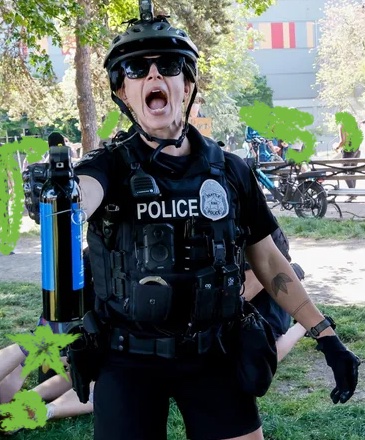“Hey Ben, you are still writing these?”
Yes, The month of June has been a busy one, filled with traveling and other writing projects, but always, in my heart and somewhere in my mind, I am asking myself and my community: How can we stop letting patriarchal misogyny ruin our lives?
So for this blog post, I want to talk about the challenges of building communities are are resistant to the influence and violence of Patriarchal Misogyny. I think most of this would apply to any community or group that doesn’t want to be controlled by someone exerting hierarchal authority over the group, but I tend to specifically think about groups that are actively dedicated to dismantling authoritarianism on a large scale, not just existing without it in their group. Perhaps I should take time to explain why, at least in the US (I haven’t really experienced community building in any other country enough to speak on it), authoritarian power structures are inherently patriarchal, but that gets me away from the topic I want to write about. So if anyone is skeptical of that claim, or wants me to try to explain it better, they can ask and it can be the subject of a future blog post.
So what I have noticed about people working together in groups that have been derailed or destroyed by one or more person attempting to dominate and control the group, in order to steal the power of others?
1. Without talking about how power is used within a group, people who are effective at harnessing and controlling the power of others will do so.
2. Using or accepting authoritarian methods of decision making and action taking is a trained/socialized behavior of being a US citizen that will serve as a default for the vast majority of people (in groups in the the US) in instances of crisis and immediacy.
3. Expecting everyone in a group to always be capable of listening openly, considering all possible options for decision making, and then patiently participating in the process of collectively making that decision is unreasonable.
4. Catching authoritarian tendencies and behaviors early on in a group’s formation and decision making processes will almost always result in less severe consequences and more generous and forgiving group members than when these tendencies are ignored until they can’t be ignored any longer.
5. At the same time as 1 through 4 are all true, communities that over-commit to establishing rules for the flow of power and its utilization can create internal structures that act as controlingly as any authoritarian leader. These institutionalized rule systems can be tricky because they can appear to be for the purpose of not privileging any individual within the group, but the reality is that all rules that get followed are to someone’s benefit. This is why rich and powerful people almost never feel compelled to follow their own rules unless the consequences for breaking them are incredibly swift and powerfully enforced. Think French revolution levels of enforcement on economic and political rulers.
6. This usually means that groups that are really resilient to the creep of authoritarianism into their power structures and dynamics are not groups that have one certain, specific set of rules in place to stop it, but instead are groups that are composed of people that are comfortable and confident in their abilities to work together to solve problems given the specific contexts in which they arise.
7. It might be more effective if people stop thinking about the idea of community as existing as a static noun, that just is, and might even be commodified into a property that some people directly own, and instead think of community building as verb which its members must keep doing and will only be “done” when that community no longer exists.
8. Patriarchy arose around the “domestication” of land, the establishment of property, and a need to enforce rules around the distribution and acquisition of property. It will always be present in situations where people are acting as if the community is a property of its members, even when its members might not be socialized or recognized as men. You don’t earn the right to be a member of a community. You practice the values that bring that community together, which means being capable of listening to what those values are and showing how you respect them/live them.
9. Communities that want to make standing up to authoritarian power structures a part of their community practice have to make talking about power and authority something that is a shared community value that requires a constant and evolving conversation and not a one time workshop or training.
